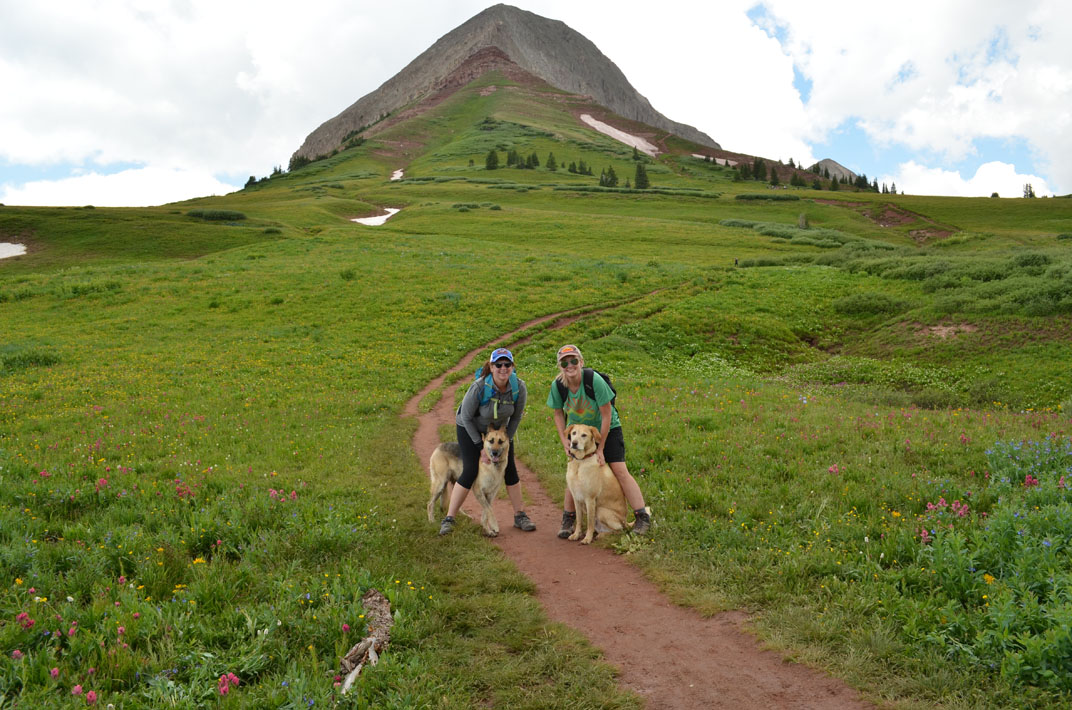The author (right) hikes a Colorado trail with her Lab mix, Rio, and their friends Shireen Symonds and Fritz. | Photo courtesy Jen Reeder
How to protect your dog from snakes
by Jen Reeder
It’s summertime, and hikers are hitting the trails, along with their canine companions. Unfortunately, so are rattlesnakes. Our wet winter and spring have led to a particularly active snake season, because rodents are thriving.
As of the first weekend of June, two dogs already had suffered rattlesnake bites in Jefferson County Open Space, at North Table Mountain Park and near Red Rocks. Rattlesnakes also are common sights in popular NOCO hiking destinations such as Horsetooth Reservoir and Lory State Park.
“Rattlesnakes have a fairly predictable pattern of activity,” said Jason Clay, public information officer for the Northeast Region of Colorado Parks and Wildlife. “They’ll be finding pavement, hard surfaces and trails to warm themselves.”
If you hear that chilling rattle while hiking, freeze in place, Clay advised. Try to figure out where the noise is coming from, so you can move a safe distance away from it – typically at least five feet – instead of inadvertently moving closer to it. If your dog is leashed, keep him close by your side as you move to safety.
“Leave the snake alone. Never under any circumstance should you try to catch, kill or provoke a rattlesnake,” Clay said, noting that in Colorado it is illegal to kill a rattlesnake simply because you encountered it on a trail.
Snakes won’t chase; they lie in wait for prey for long periods of time. “They aren’t built for speed,” Clay quipped.
Bull snakes, which are nonvenomous, often are confused with rattlesnakes because of their similar appearance and behavior. The bull snake will coil, hiss and vibrate its tail when threatened, and may even flatten its head to mimic the triangular head of a rattlesnake. Unlike a rattlesnake, a bull snake has a sharply pointed tail, round pupils and an oval-shaped head. But rather than trying to get close enough to identify the subtle differences, Clay recommends just heading in a different direction: “Continue on, and enjoy nature.”
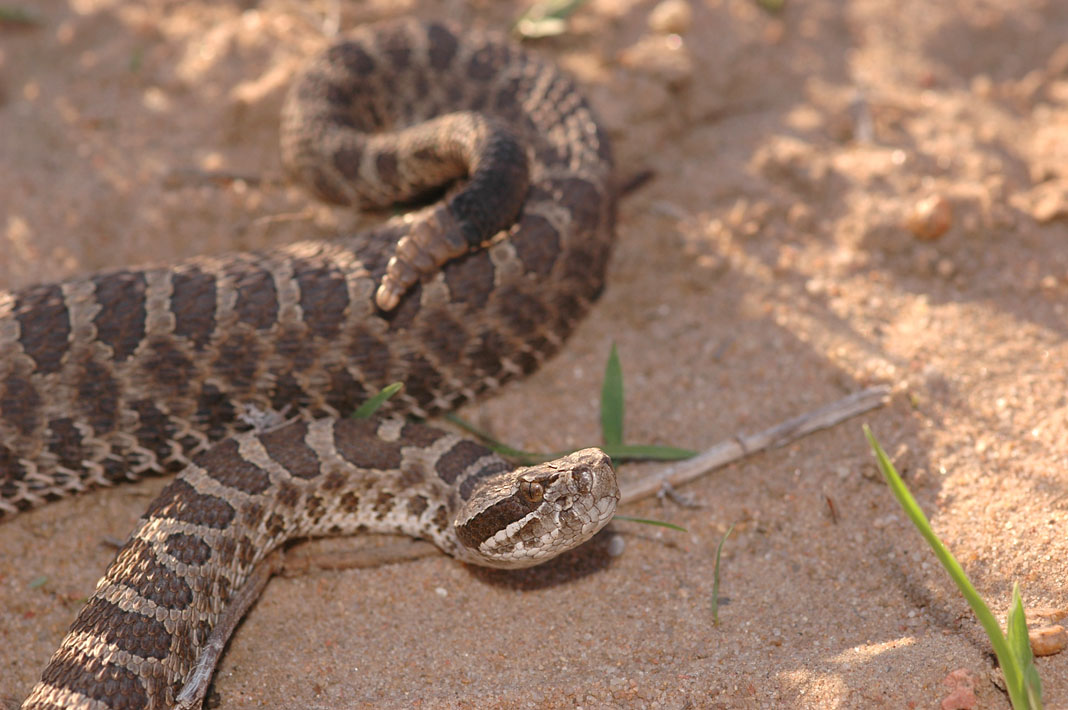
If you encounter a rattlesnake, maintain a safe distance of at least five feet.
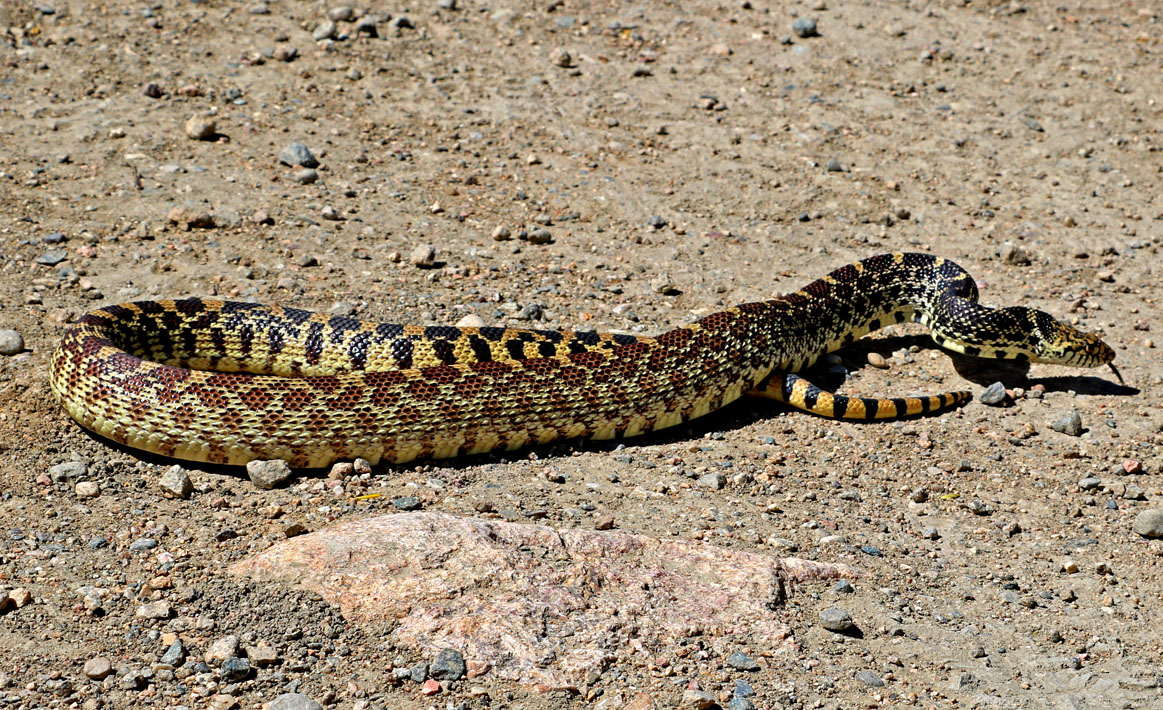
A bull snake resembles and can mimic a rattlesnake but is not a threat to humans or dogs.
Dr. Jessica Addis, VMD and associate veterinarian at Moore Animal Hospital in Fort Collins, said rattlesnake bites aren’t extremely common. As of early June, the practice hadn’t treated a confirmed snake bite in over a year. But if a dog is bitten by a rattlesnake, owners should seek veterinary care immediately.
“The amount of venom that the snake releases from the bite can vary, so the symptoms vary as well,” Addis said. “They can range from a local reaction like redness, swelling, a wound, and even death of the tissue – or ‘tissue necrosis,’ as we call it – to cardiac arrythmia, collapse, more signs of shock like muscle tremors, and at the worst end of it, paralysis, coma or even death.”
Addis noted that larger snakes produce more venom than their smaller counterparts, but the venom of young snakes can be more concentrated. Additionally, about 20 percent of bites can be “dry,” meaning the snake doesn’t inject venom into the victim. With or without venom, a snake bite can be painful, and the wound may become infected.
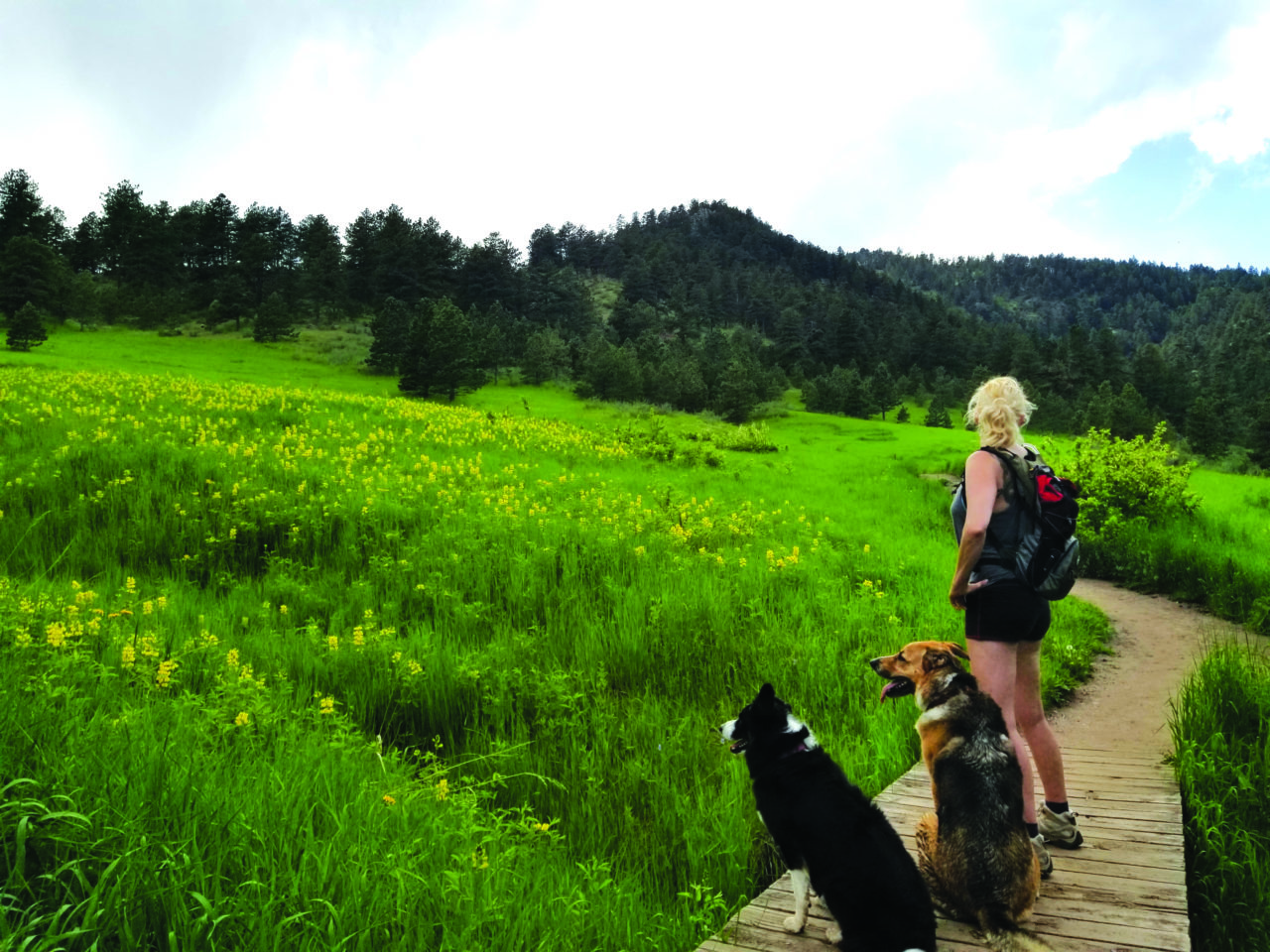
Arthur’s Rock trail at Lory State Park | Photo courtesy Kate Gutekunst
If a rattlesnake bites your dog, don’t waste time trying to take a photo of the culprit. Instead, try to keep your pet calm, and carry him if possible, Addis said. Once in the car, call an emergency clinic to make sure they carry antivenom. (It’s important to note that only emergency animal hospitals usually stock rattlesnake antivenom.)
It’s not a “wait-and-see” situation because typically the dog will need to be treated with antivenom within two to four hours. Bites on the face and limbs tend to take a little bit longer for the venom to distribute throughout the body, versus bites on their trunk.
Moore Animal Hospital doesn’t carry antivenom, but they offer a rattlesnake vaccine. It’s generated from Western Diamondback venom, a relative of the rattlers (Western, Prairie and Massasauga) in Colorado.
“If you do a lot of hiking, especially in our backwoods where you’re going to be far away from a veterinary hospital in an emergency situation, I think it’s worth doing,” Addis said, “because it can potentially improve the survival chances of your dog. But it doesn’t replace the fact that [if bitten] they still should get the antivenom and treatment.”
As the adage goes, prevention is the best medicine. Traditional
snake-aversion training involves putting shock collars on dogs and zapping them when they come close to a live rattlesnake. But one Fort Collins-based dog trainer has a positive alternative.
Amy Creaven, CPA-CTP, owner of Trust Your Dog Training, started offering positive reinforcement snake avoidance training in 2017. Instead of shocking the dogs, which she says not only creates fear but can lead to aggression and unreliable results, she uses positive methods to teach dogs to return to their owners when they see, hear or smell a snake. The dogs then alert their owner to the nearby danger by barking at them, nosing their hand, or jumping on their chest, depending on the dog’s proclivities.
“We’re using the dog’s natural ability to help us stay safe and to help them stay safe, too,” Creaven said.
Creaven acknowledges that the approach is novel – she only knows of two other dog trainers offering positive snake avoidance training in the United States – but hopes her workshops, private lessons and planned webinars will catch on.
“A lot has changed in 30 years,” she said. “Dogs have become part of the family. Positive reinforcement allows us to have a better relationship with them.”
For more information, visit: https://cpw.state.co.us, https://mooreanimalhospital.com or www.creavengoodbehavior.com.
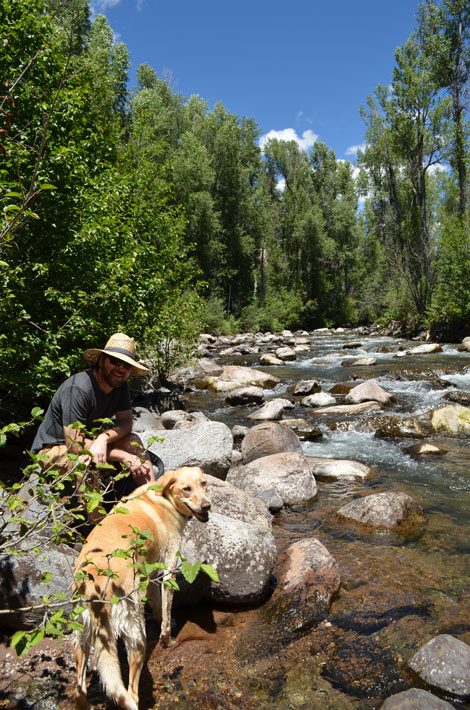
When a snake strikes
The days of trying to suck the venom out of a snakebite wound are over. Instead, immediately move to safety and let the wound bleed for about 30 seconds before cleaning it with iodine, antibiotic ointment or soap and water if possible, advises Jason Clay of Colorado Parks and Wildlife. He also suggests:
1. Keep the victim calm to slow the heart rate.
2. Try to keep the bite location even with the heart – raising the wounded area above the heart will increase the spread of venom in the body.
3. Do not use a venom extractor on a dog because the fur will prevent a good seal from forming.
4. If medical treatment is more than 30 minutes away and the bite is on an extremity, wrap the hand, finger, foot, lower arm or leg in a bandage.
5. Get to the hospital or emergency veterinary clinic as quickly as possible.

